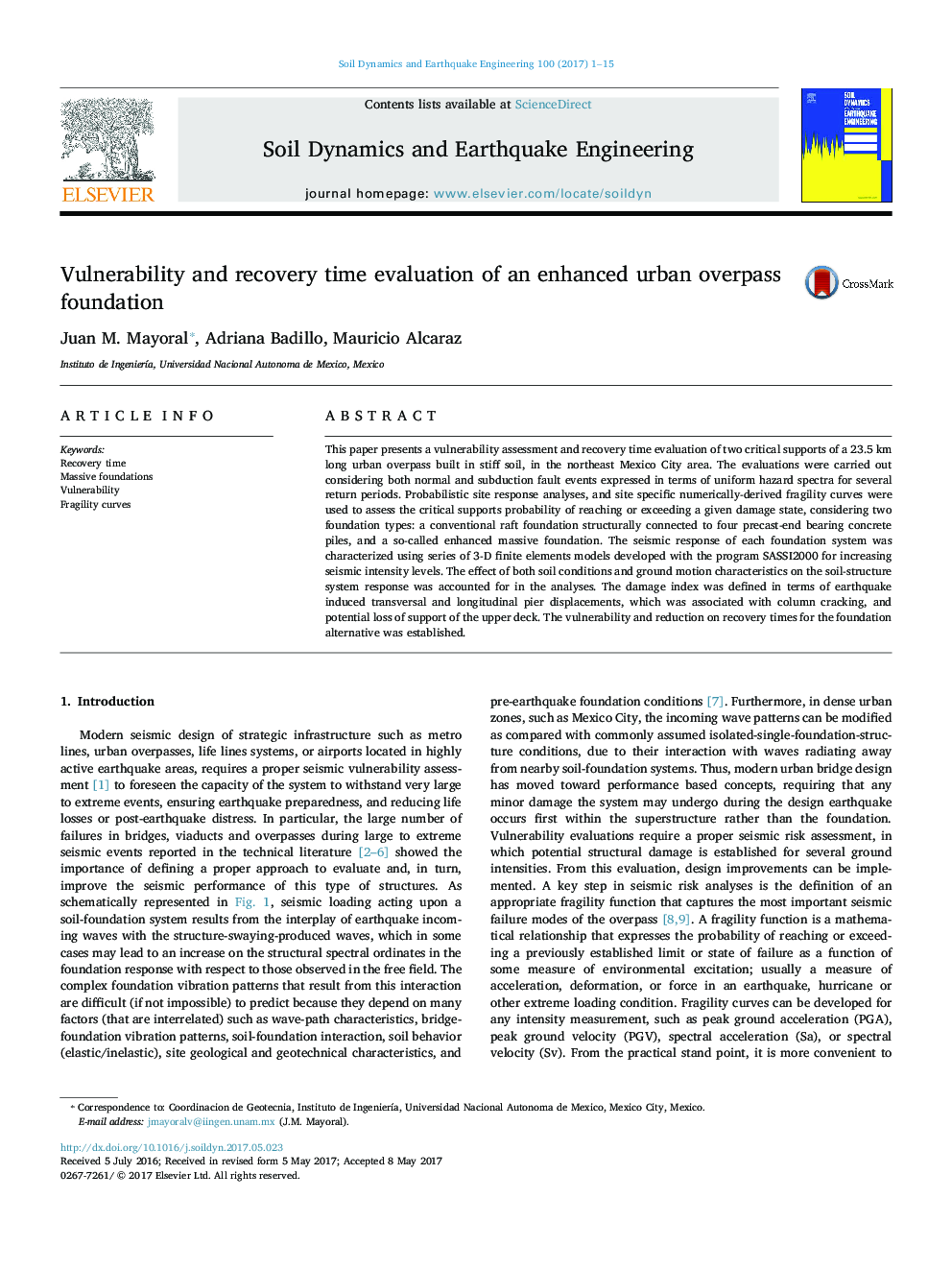| Article ID | Journal | Published Year | Pages | File Type |
|---|---|---|---|---|
| 4927006 | Soil Dynamics and Earthquake Engineering | 2017 | 15 Pages |
Abstract
This paper presents a vulnerability assessment and recovery time evaluation of two critical supports of a 23.5Â km long urban overpass built in stiff soil, in the northeast Mexico City area. The evaluations were carried out considering both normal and subduction fault events expressed in terms of uniform hazard spectra for several return periods. Probabilistic site response analyses, and site specific numerically-derived fragility curves were used to assess the critical supports probability of reaching or exceeding a given damage state, considering two foundation types: a conventional raft foundation structurally connected to four precast-end bearing concrete piles, and a so-called enhanced massive foundation. The seismic response of each foundation system was characterized using series of 3-D finite elements models developed with the program SASSI2000 for increasing seismic intensity levels. The effect of both soil conditions and ground motion characteristics on the soil-structure system response was accounted for in the analyses. The damage index was defined in terms of earthquake induced transversal and longitudinal pier displacements, which was associated with column cracking, and potential loss of support of the upper deck. The vulnerability and reduction on recovery times for the foundation alternative was established.
Related Topics
Physical Sciences and Engineering
Earth and Planetary Sciences
Geotechnical Engineering and Engineering Geology
Authors
Juan M. Mayoral, Adriana Badillo, Mauricio Alcaraz,
